英国文学第三章
- 格式:ppt
- 大小:280.50 KB
- 文档页数:22
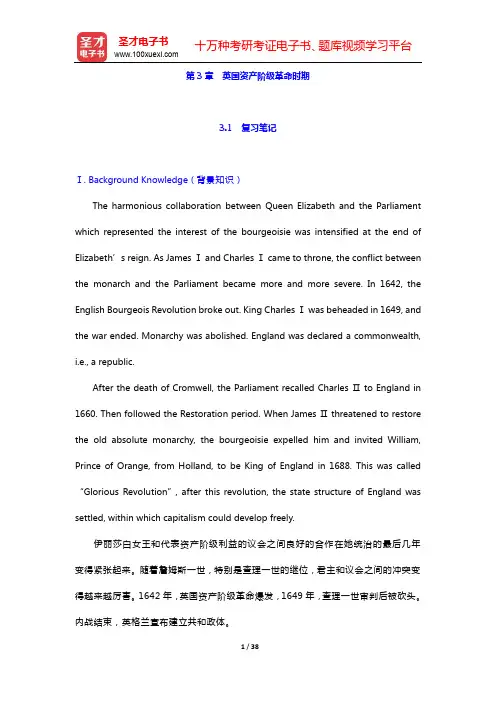
第3章英国资产阶级革命时期3.1 复习笔记Ⅰ. Background Knowledge(背景知识)The harmonious collaboration between Queen Elizabeth and the Parliament which represented the interest of the bourgeoisie was intensified at the end of Elizabeth’s reign. As JamesⅠ and Charles Ⅰ came to throne, the conflict between the monarch and the Parliament became more and more severe. In 1642, the English Bourgeois Revolution broke out. King Charles Ⅰ was beheaded in 1649, and the war ended. Monarchy was abolished. England was declared a commonwealth, i.e., a republic.After the death of Cromwell, the Parliament recalled Charles Ⅱ to England in 1660. Then followed the Restoration period. When James Ⅱ threatened to restore the old absolute monarchy, the bourgeoisie expelled him and invited William, Prince of Orange, from Holland, to be King of England in 1688. This was called “Glorious Revolution”, after this revolution, the state structure of England was settled, within which capitalism could develop freely.伊丽莎白女王和代表资产阶级利益的议会之间良好的合作在她统治的最后几年变得紧张起来。
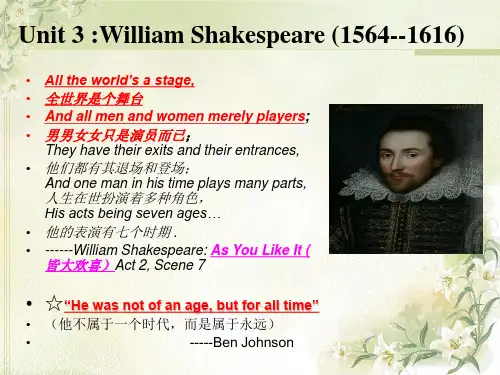

第3章乔叟时期(1350~1400)3.1 复习笔记Ⅰ. Historical background(历史背景)Two important historical events happened during the century in which Chaucer lived and their influence can be detected in the writings of Chaucer and Langland. The first was the Hundred Years’ War between England and France, starting from the reign of Edward the Third (1327~1377) and ending during the reign of Henry the Sixth (1421~1471). It was a series of wars fought between the English kings and the French kings for the French throne. The second historical event was the peasant uprising of 1381, during the reign of King Richard the Second. This peasant uprising was the direct result of exploitation and oppression of the peasants by the feudal lords.在乔叟生活的年代,发生过两件大事,它们的影响力可以在乔叟和朗格兰的作品中见到。
第一件大事是英法百年战争,始于爱德华三世统治时期(1327~1377),终于亨利六世时期(1421~1471)。
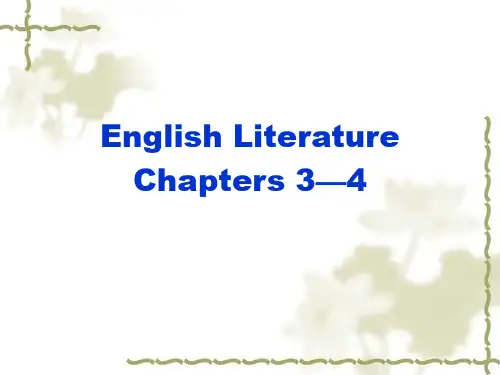
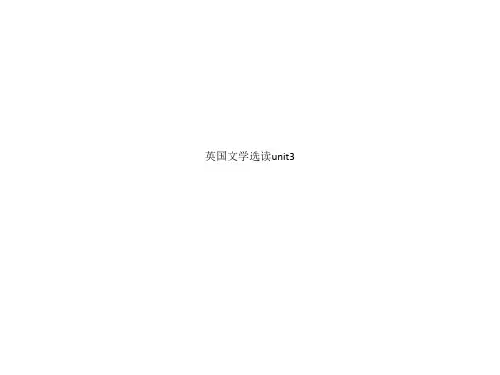
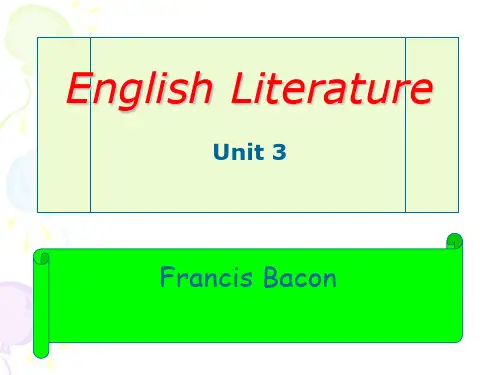
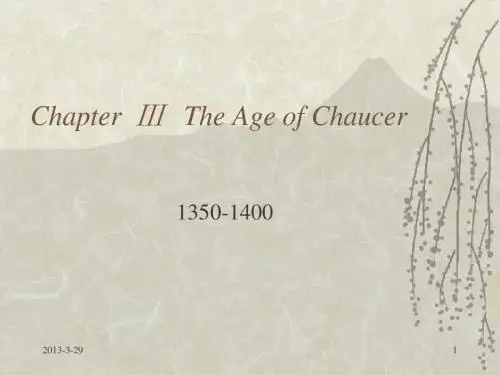
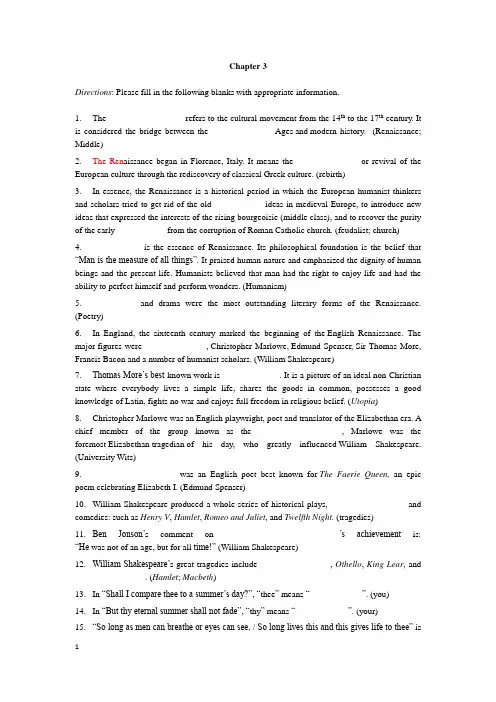
Chapter 3Directions: Please fill in the following blanks with appropriate information.1.The _________________ refers to the cultural movement from the 14th to the 17th century.It is considered the bridge between the ______________ Ages and modern history. (Renaissance; Middle)2.The Ren aissance began in Florence, Italy. It means the ______________ or revival of the European culture through the rediscovery of classical Greek culture. (rebirth)3.In essence, the Renaissance is a historical period in which the European humanist thinkers and scholars tried to get rid of the old ___________ ideas in medieval Europe, to introduce new ideas that expressed the interests of the rising bourgeoisie (middle class), and to recover the purity of the early ___________ from the corruption of Roman Catholic church. (feudalist; church)4.___________ is the essence of Renaissance. Its philosophical foundation is the belief that “Man is the measure of all things”. It praised human nature and emphasized the dignity of human beings and the present life. Humanists believed that man had the right to enjoy life and had the ability to perfect himself and perform wonders. (Humanism)5.___________and drama were the most outstanding literary forms of the Renaissance. (Poetry)6.In England, the sixteenth century marked the beginning of the English Renaissance. The major figures were ______________, Christopher Marlowe, Edmund Spenser, Sir Thomas More, Francis Bacon and a number of humanist scholars. (William Shakespeare)7.Thomas More’s best-known work is _____________. It is a picture of an ideal non-Christian state where everybody lives a simple life, shares the goods in common, possesses a good knowledge of Latin, fights no war and enjoys full freedom in religious belief. (Utopia)8.Christopher Marlowe was an English playwright, poet and translator of the Elizabethan era. A chief member of the group known as the ___________________, Marlowe was the foremost Elizabethan tragedian of his day, who greatly influenced William Shakespeare. (University Wits)9.___________________ was an English poet best known for The Faerie Queen,an epic poem celebrating Elizabeth I. (Edmund Spenser)10.William Shakespeare produced a whole series of historical plays, _________________ and comedies: such as Henry V, Hamlet, Romeo and Juliet, and Twelfth Night. (tragedies)11.Ben Jonson’s comment on __________________________’s achievement is: “He was not of an age, but for all time!” (William Shakespeare)12.William Shakespeare’s great tragedies include ________________, Othello, King Lear, and ________________. (Hamlet; Macbeth)13.In “Shall I compare thee to a summer’s day?”, “thee” means “____________”. (you)14.In “But thy eternal summer shall not fade”, “thy” means “____________”. (your)15.“So long as men can breathe or eyes can see, / So long lives this and this gives life to thee” istaken from William Shakespear e’s ____________________. (Sonnet 18)16.The rhyme scheme in Shakespeare’s Sonnet 18is________________________________. (a-b-a-b, c-d-c-d, e-f-e-f, g-g)17. A typical Shakespearean sonnet has ____________ lines of iambic pentameter and ends in a rhymed ____________. (14; couplet)18.“To be, or not to be: that is the question”is taken from William Shakespeare’s tragedy ____________. (Hamlet)19.“Studies serve for delight, for ornament, and for ability”is taken from Francis Bacon’s __________________. (Essays)20.“Some books ar e to be tasted, others to be swallowed, and some few to be chewed and digested” is taken from ________________________’s Essays. (Francis Bacon)1,_________________指的是从第十四到第十七世纪的文化运动。
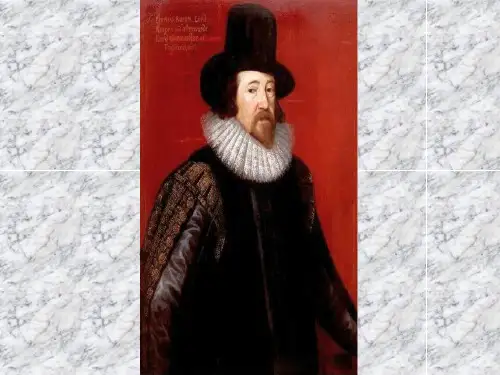
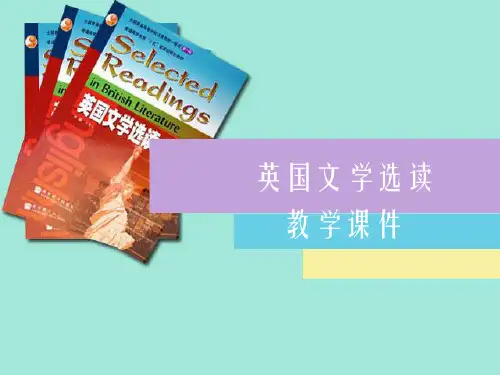

Chapter 3 The Flowering of English LiteratureAdela Class B Lanzhou UniversityI.The Flourishing of LiteratureII.Sidney and RaleighA.Sir Philip Sidney(1554-1586)-----a well-known poet and critic of poetryHis main works:1)Astrophel and Stella( love sonnets)爱星者和星星2)Apology for Poetry诗辩( according to Sidney, poetry has a superiorityover philosophy and history)n Plato’s “ Republic”:1, Idea理念;相2, Experienced world3, ArtB. Walter Raleigh(1552?-1618)--------another versatile man of action, thought and letters.His works:1)Discovery of Guiana ( literary history)2)History of the World3)His handful of lyricsIII.Edmund Spenser( 1552-1599)------- the Poet’s Poet of the period埃德蒙·斯宾塞(Edmund Spenser,1552-1599),英国文艺复兴时期伟大诗人,代表作有长篇史诗《仙后》、田园诗集《牧人月历》、组诗《情诗小唱十四行诗集》、《婚前曲》、《祝婚曲》等。
斯宾塞早在1569年就翻译过法国诗人杜倍雷的诗歌,并通过法文转译了意大利诗人彼特拉克的诗歌。
英美文学选读翻译(英语专业自考)第一部分:英国文学第三章浪漫主义时期西方文学史上的浪漫主义运动是不易用一言以蔽之的,尤其是它的确切时间与特点,因为这是一场席卷全欧及美国的浩大文学变革。
而英国浪漫主义时期一般被认为始于1798年,标志为华滋华斯与柯勒治的《抒情歌谣集》的出版,终于1832年,标志为沃特·斯哥特的去世及议会第一个改革提案的通过。
但上述这些标志也并非精确而权威,因为作为一股文学潮流,浪漫主义早在《抒情歌谣集》之前就开始了。
在前一章提到的感伤主义作家中,我们就可以发现他们对古希腊罗马的作品风范已失去兴趣,取而代之的是对文学与传奇的重新思考。
这一切都是自蒲柏至约翰逊时期的新古典主义理性文学的叛逆。
而英国文学史上最伟大的浪漫主义作品有不少都产生于激进与传统相冲撞的18世纪末,这时英国又面临着新的发展动力,一是1789-1794年的法国资产阶级大革命,一是同时期英国内部的工业革命。
法国哲学家让·亚克·卢梭是18世纪后半叶的主导思想家。
1762年,他出版了两部作品震惊欧洲,《社会契约论》与《爱弥尔》。
在这两部作品中,他探索了有关自然、社会与教育的新思想。
卢梭的这些思想为法国大革命做了必要的意识形态准备,因为它激起了人们对封建暴君的愤恨及对美好未来的希望。
法国革命的消息,尤其是《人权宣言》的发表及攻打巴士底狱也点燃了英国自由主义与激进主义者同情的火花。
英国遍地都成立了各种爱国者俱乐部或协会,宣传自由、平等与博爱。
1790年10月,埃德蒙·伯克出版了《法国大革命写照》。
他的这本政论小册子以笔墨诛伐了激进的革命以及对君主制与宗教特权摒弃,他对狂热的革命暴动及未来的暴民统治与军事独裁大泼冷水。
伯克的文章激起了要求打倒暴君、废除压迫政府的邀进派作家的反驳。
其中托马斯·潘因的《人权宣言》(1791-1792)最有力度。
潘因对欧洲的情势深为了解:大革命期间他本人就在法国,并在文章中下出结论,1789年以前的法国一片黑暗,处处都是压迫与不幸,除了革命,没有一条通向自由的路,此外,威廉·戈德温在他的《有关政治正义的研究》(1793)中强烈谴责了不合理的经济制度与政治压迫。